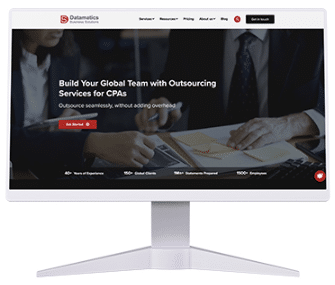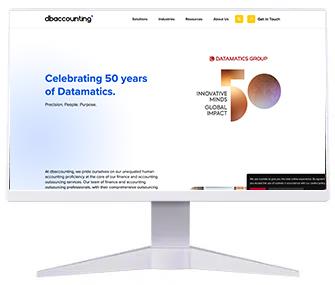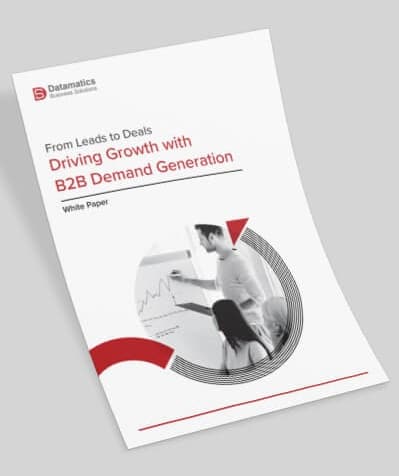The traditional B2B funnel is outdated. It simply no longer works as it once did.
Once upon a time, the buyer’s journey was predictable. It started with creating awareness, then leading to making the buyer consider the product/service and finally convincing them to take a decision. Marketers could run linear campaigns and expect a steady flow of leads into sales. But those days are gone.
Today’s B2B buyers control the process. On average, they encounter more than 60 brand touchpoints before purchasing.
In fact, research shows that buyers complete an estimated 70% of their research before ever contacting a sales team. This complex journey also involves more people than ever, with the average B2B buying group including 11 individuals.
This shift has created a new reality, one that is more complex. This new reality involves multiple channels, devices, and formats. All to get the attention of the buyers.
The expectations have increased as well. Most buyers now demand personalized, relevant engagement from the very first interaction. And the sales cycle? Most extend beyond 6 months.
The result? The linear funnel is obsolete. Businesses that depend on it waste budget, miss opportunities, and lose a reliable pipeline.
At Datamatics, we see this as an opportunity, not an obstacle. Our demand generation services use a modern, multi-channel approach to capture leads. We use intent data and engage buying groups holistically, accelerating opportunities with speed, precision, and ROI.
This is not just theory. It is a proven blueprint for transforming complex buyer journeys into measurable growth.
Let’s explore how our intent-based demand generation delivers high-quality, sales-ready leads for clients.
Key Takeaway
The linear sales funnel no longer reflects today’s complex B2B buying journey. Success now depends on a multi-channel, intent-driven approach that engages entire buying groups with personalized, relevant experiences. At Datamatics, we have built a proven framework to transform this complexity into predictable growth, faster pipelines, and higher ROI.
Why the Linear Funnel Fails Modern B2B Demand Generation?
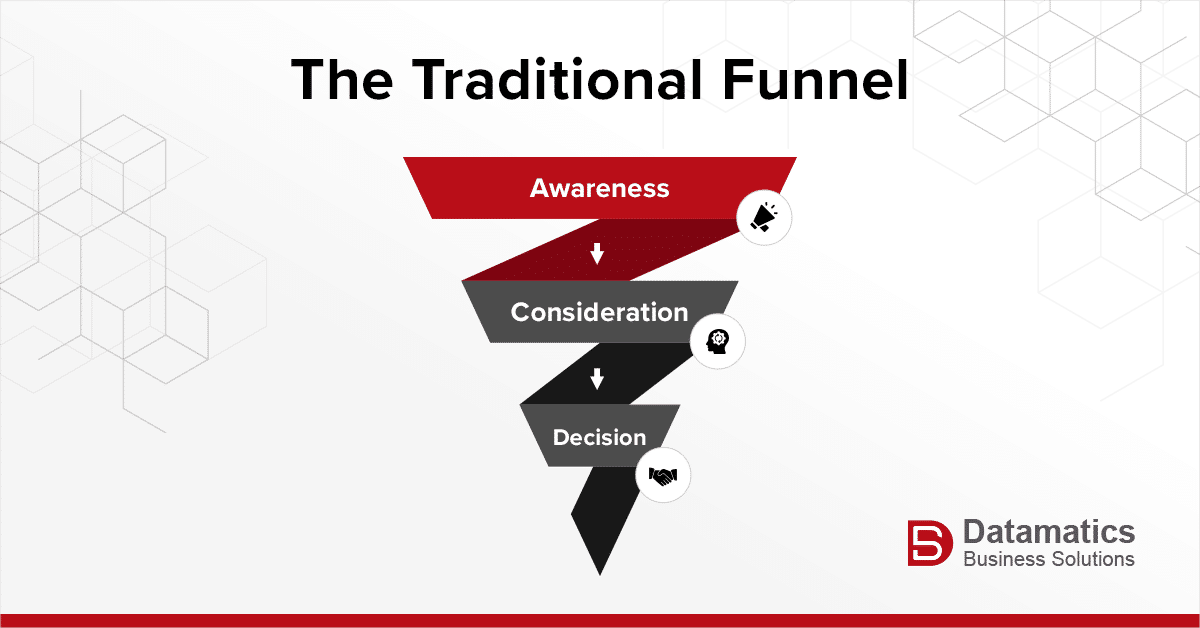
The classic three-stage funnel, Awareness → Consideration → Decision, has been around for years. The idea was simple, and it followed a set pattern – pour leads in at the top, nurture them through the middle, and they would drip out the bottom as paying customers. Neat in theory, yes. But in practice? In the current landscape, it fails to capture the complexities of modern B2B buyers. It doesn’t encapsulate the way these buyers make decisions.
The gaps in the old funnel were many. I identified a few, as listed here:
No Urgency, No Clear Intent
Nearly 80% of marketing leads never convert. Why? Because they are often passed along too soon. These leads aren’t nurtured properly, and intent signals are frequently misjudged. Many enter the sales stage without real buying intent.
In fact, only 27% of leads are genuinely sales-ready in those early stages. The rest? They float away.
Disconnected Channels and Teams
When sales and marketing don’t work in sync, the fallout is costly. Companies that bring the two together see 19% faster revenue growth and 15% stronger profits.
On the other hand, misalignment can wipe out 10% of revenue each year. And here is the kicker – nearly 60% of B2B content never gets used. This is not because it is bad, but because sales don’t know it exists or don’t find it relevant.
Wasted Effort
Too many marketers pass leads straight to sales. 60% of them. And surprisingly, only 3 in 10 of these leads are qualified. Now add to that the fact that 65% of B2B marketers don’t even have a proper lead nurturing program.
Combine all of these, and you get a system pouring time and budget into contacts that were never going to buy in the first place.
 Select an element to maximize. Press ESC to cancel.
Select an element to maximize. Press ESC to cancel.Deals that Drag on
Organizations that align around the pipeline are 67% more likely to close deals. They also grow nearly three times quicker than their peers. When intent signals and pipeline velocity are actually put to use, deal cycles shrink by 20–38%. That is real money being left on the table when it isn’t done.
So, what do these challenges ultimately lead to? Stalled pipelines. Sales and marketing pulling in opposite directions. And a flood of weak leads that never turn into revenue. The numbers say it all. Companies that get lead nurturing right produce 50% more sales-ready leads at 33% lower cost. Meanwhile, the global tab for misalignment? A staggering $1 trillion lost every year.
Key Takeaway
The linear funnel doesn’t just oversimplify the B2B buying journey. It creates blind spots that cost time, money, and opportunity. The companies winning today are the ones that replace outdated lead-chasing with intent-driven, buying group–focused strategies where sales and marketing work as one
What is Intent-based Demand Generation?
Intent-based demand generation represents a strategic shift from casting a wide net to focusing on specific accounts that are actively displaying buying signals. In this type of demand gen, instead of reaching out to a broad audience, marketers leverage behavioral data to identify companies that are “in-market” for a solution like yours.
This data comes from a variety of sources, including:
Search Intent: Companies actively researching about your product or industry on search engines.
Content Consumption: Accounts downloading whitepapers, attending webinars, or reading blog posts on relevant topics.
Third-Party Data: Aggregated signals from across the web that indicate a company’s research activities.
By harnessing these powerful insights, you can move from a reactive to a proactive strategy. This approach allows you to personalize your messaging, align sales and marketing efforts, and engage with prospects at the exact moment they are most receptive.
The result? Higher quality leads, accelerated sales cycles, and a significant boost to your marketing ROI.
Intent-based demand generation is more than just a tactic. It is a fundamental change that empowers you to work smarter, not harder, and transform your demand into high-value opportunities with unparalleled precision.
Introducing the Datamatics Demand Generation Acceleration Curve

We have already established that in a fast-moving digital world a straight-line model is showing its cracks. Buyers no longer follow a neat path from awareness to decision. They are more informed, more self-directed, and far more selective than ever before. Research is often done long before a sales rep enters the picture, and touchpoints spread across multiple channels — blogs, webinars, peer reviews, LinkedIn posts, podcasts, you name it.
To match the new reality of B2B demand generation, we at Datamatics have taken a fresh way of thinking. We have taken the Intent-Based Demand Generation Acceleration Curve.
More than just another marketing diagram, this curve offers a living, breathing blueprint for how to understand buyers in motion. It reflects the truth that intent and urgency don’t grow in a straight line but rather build momentum like a rising wave.
Understanding the Curve
The curve rests on two simple but powerful dimensions: Intent and Urgency.
Intent (X-axis): This reflects where a buyer is on their journey. From the early stages of casual awareness to the point where they are actively weighing solutions.
Urgency (Y-axis): This reflects how quickly they need to act. As intent rises, urgency tends to rise too, and not slowly. That is why the curve bends upward, showing how opportunity increases sharply once both intent and urgency come together.
To make this actionable, the curve is divided into three zones, each showing what kind of engagement makes sense at that stage.
The Three Zones of Engagement
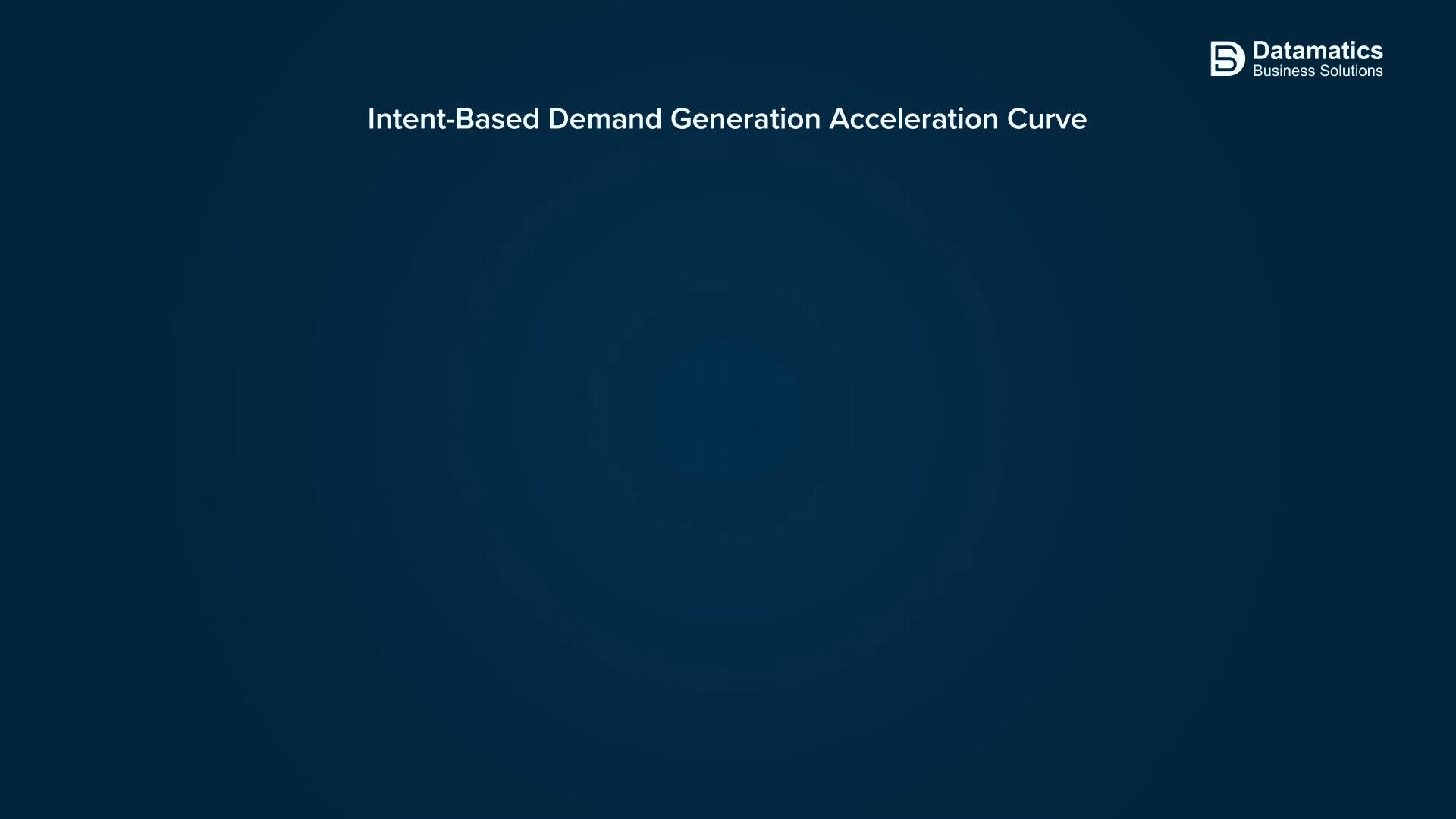
The Green Zone: Awareness
At the base of the curve, intent and urgency are low. Buyers here are only starting to explore, perhaps curious but far from ready to commit. This is the place for broad-reach activities that spark interest and put your brand on the radar. Marketing activities like webinars, content syndication, and partner programs work best here.
You are not selling here. You are planting seeds.
 Select an element to maximize. Press ESC to cancel.
Select an element to maximize. Press ESC to cancel.The Orange Zone: Warming Up
As interest sharpens, buyers step into the orange zone. They are not quite ready to sign, but they are leaning in. Here, intent is clearer, urgency is forming, and the leads you capture are more substantial. The curve points to two types of leads at this stage:
- High-Quality Lead (Single Touch): Someone who responds to a campaign like an email.
- High-Quality Lead (Double Touch): A contact who engages with more advanced tactics, like deeper syndication, signaling genuine curiosity.
This is the time for Account-Based Marketing. The broad strokes of awareness are behind you. Now it is about zeroing in on high-value accounts, crafting relevant messages, and showing you understand their world.
The Red Zone: Hot and Ready
At the top of the curve, urgency peaks. Buyers in this zone know what they need and are actively moving toward a decision. They are not just leads. They are opportunities primed for sales.
Activities here are laser-focused: appointment setting, direct engagement with buying groups, and BANT qualification (Budget, Authority, Need, Timeline). This is where all the earlier groundwork pays off, and sales can step in with confidence.
 Select an element to maximize. Press ESC to cancel.
Select an element to maximize. Press ESC to cancel.You can also read: 5 Signs Your Business Needs Demand Generation Services Now
 Select an element to maximize. Press ESC to cancel.
Select an element to maximize. Press ESC to cancel. Select an element to maximize. Press ESC to cancel.
Select an element to maximize. Press ESC to cancel. Select an element to maximize. Press ESC to cancel.
Select an element to maximize. Press ESC to cancel. Select an element to maximize. Press ESC to cancel.
Select an element to maximize. Press ESC to cancel. Select an element to maximize. Press ESC to cancel.
Select an element to maximize. Press ESC to cancel. Select an element to maximize. Press ESC to cancel.
Select an element to maximize. Press ESC to cancel. Select an element to maximize. Press ESC to cancel.
Select an element to maximize. Press ESC to cancel. Select an element to maximize. Press ESC to cancel.
Select an element to maximize. Press ESC to cancel. Select an element to maximize. Press ESC to cancel.
Select an element to maximize. Press ESC to cancel. Select an element to maximize. Press ESC to cancel.
Select an element to maximize. Press ESC to cancel. Select an element to maximize. Press ESC to cancel.
Select an element to maximize. Press ESC to cancel. Select an element to maximize. Press ESC to cancel.
Select an element to maximize. Press ESC to cancel. Select an element to maximize. Press ESC to cancel.
Select an element to maximize. Press ESC to cancel. Select an element to maximize. Press ESC to cancel.
Select an element to maximize. Press ESC to cancel. Select an element to maximize. Press ESC to cancel.
Select an element to maximize. Press ESC to cancel. Select an element to maximize. Press ESC to cancel.
Select an element to maximize. Press ESC to cancel. Select an element to maximize. Press ESC to cancel.
Select an element to maximize. Press ESC to cancel. Select an element to maximize. Press ESC to cancel.
Select an element to maximize. Press ESC to cancel. Select an element to maximize. Press ESC to cancel.
Select an element to maximize. Press ESC to cancel. Select an element to maximize. Press ESC to cancel.
Select an element to maximize. Press ESC to cancel. Select an element to maximize. Press ESC to cancel.
Select an element to maximize. Press ESC to cancel. Select an element to maximize. Press ESC to cancel.
Select an element to maximize. Press ESC to cancel. Select an element to maximize. Press ESC to cancel.
Select an element to maximize. Press ESC to cancel. Select an element to maximize. Press ESC to cancel.
Select an element to maximize. Press ESC to cancel. Select an element to maximize. Press ESC to cancel.
Select an element to maximize. Press ESC to cancel. Select an element to maximize. Press ESC to cancel.
Select an element to maximize. Press ESC to cancel. Select an element to maximize. Press ESC to cancel.
Select an element to maximize. Press ESC to cancel. Select an element to maximize. Press ESC to cancel.
Select an element to maximize. Press ESC to cancel. Select an element to maximize. Press ESC to cancel.
Select an element to maximize. Press ESC to cancel.Why This B2B Demand Generation Model Matters?
The Intent-Based Demand Generation Acceleration Curve gives structure to the complexity of modern B2B buying. It helps you read buyer signals in real time, showing when to educate, when to nurture, and when to hand over to sales.
Instead of spreading resources thin or guessing who’s ready, it shows exactly where to place your energy.
This B2B demand generation curve is not just about keeping up with the market. It is about working in rhythm with how people actually buy today.
Every click, every download, every sign of interest is a clue. And the curve helps you interpret those clues.
The outcome? Shorter cycles, stronger ROI, and a growth engine you can count on.
In short, the funnel may have had its time, but the curve reflects the new era. If your marketing strategy is still built around the old straight-line funnel, you’re not just behind — you’re invisible in a world where buyers move in waves of intent and urgency.
Key Takeaway
The Intent-Based Demand Generation Acceleration Curve recognizes that buyers move in waves of intent and urgency, not straight lines. By aligning activities with these shifts, businesses can stop guessing, engage the right accounts at the right time, and turn complexity into predictable growth.
FAQs
1. What is intent-based demand generation?
It prioritizes accounts showing in-market behavior (searches, content, third-party signals) and engages full buying groups with relevant outreach.
 Select an element to maximize. Press ESC to cancel.
Select an element to maximize. Press ESC to cancel. Select an element to maximize. Press ESC to cancel.
Select an element to maximize. Press ESC to cancel.2. How is the Acceleration Curve different from a funnel?
It maps intent and urgency to three zones so teams act at the right time with the right play, not the same step for everyone.
3. What makes Datamatics’ approach different?
It maps intent and urgency to three zones so teams act at the right time with the right play, not the same step for everyone.
 Select an element to maximize. Press ESC to cancel.
Select an element to maximize. Press ESC to cancel. Select an element to maximize. Press ESC to cancel.
Select an element to maximize. Press ESC to cancel. Select an element to maximize. Press ESC to cancel.
Select an element to maximize. Press ESC to cancel.Intent-based Demand Generation: Understanding the Value Proposition
For the intent-based demand generation curve, we did not leave it to guesswork. Our approach is grounded in research and 50+ years of experience. By following this demand generation curve, we give your business more than just leads. We deliver real momentum and lasting growth.
1. Precision Lead Generation
Forget about chasing a sea of cold names. We focus on the people and buying groups that actually matter. By tapping into intent data and advanced analytics, we spot prospects who are actively researching solutions. We don’t reach out to prospects who are just browsing.
So, what does this mean? Your sales team gets leads with urgency, relevance, and a real shot at becoming customers.
2. Aligned Teams & Data
When marketing and sales work in silos, everyone loses. We close that gap. With shared dashboards, real-time insights, and two-way feedback, both teams operate from the same playbook.
Marketing gets sharper because it is informed by sales intel, and sales gets warmer, context-rich leads that actually convert. Everyone is rowing in the same direction.
3. Full Campaign Ownership
Multi-channel campaigns can be messy to run in-house. We take the weight off your shoulders.
From strategy and content to delivery and validation, we run the entire show. Your team can stay focused on what they do best, while we handle the complex, behind-the-scenes execution. You get the outcomes without the chaos.
Discover how a cybersecurity leader achieved 45% higher ROI.
4. Faster Pipeline
We know time kills deals. That is why our methods are designed to keep things moving. By engaging high-intent buying groups with targeted messaging, we cut down the time it takes for a lead to become an opportunity. Sales teams spend their time talking to people who are ready to move forward.
5. Scalable Multi-Channel Reach
Your buyers aren’t hanging out in one place, so why should your campaigns? Whether they are scrolling on the internet, joining webinars, reading forums, or checking their inbox, we make sure your brand is right there with them. Our integrated approach means every touchpoint is connected, so no genuine signal slips through the cracks.
6. Better ROI & Growth
At the end of the day, it’s not about leads; it’s about impact. We track the metrics that actually matter — pipeline generated, lead quality, conversion rates, and real ROI. With transparent reporting and continuous refinement, we make sure your investment pays off not just today but in the long run. It’s not about promises; it’s about proof.
These value propositions show that Datamatics helps brands win in a world where buyers are more selective, informed, and complex than ever.
Key Takeaway
Winning in modern B2B marketing isn’t about chasing more leads. It is about focusing on the right ones, aligning teams, and creating campaigns that work across every channel buyers use. With Datamatics’ intent-based demand generation, you don’t just get activity, you get momentum: high-quality leads, shorter sales cycles, and measurable growth you can count on.
 Select an element to maximize. Press ESC to cancel.
Select an element to maximize. Press ESC to cancel. The Datamatics Advantage
In a market saturated with generic solutions, Datamatics offers a differentiated approach. Our services deliver what we promise. We partner with you to engineer a demand generation engine that is precise, efficient, and deeply integrated with your business objectives.
By moving beyond the limitations of the traditional funnel and embracing an intent-driven, multi-channel strategy, we empower your business to:
- Generate higher quality leads, faster
- Improve marketing and sales alignment
- Reduce wasted resources and optimize spending
- Accelerate your sales pipeline
- Achieve measurable, impactful growth
The future of B2B demand generation is here, and it’s accelerated. Let Datamatics help you navigate this complex landscape, turning intent signals into profitable customer relationships and ensuring your business isn’t just keeping up, but leading the pack.
Ready to transform your demand generation and experience true acceleration? Let’s connect.
Like what you read? Subscribe to our blogs and stay on top of the trends.

Paul van de Kamp

